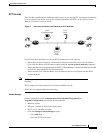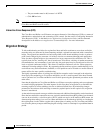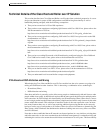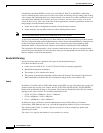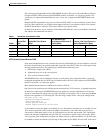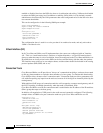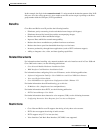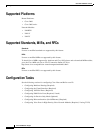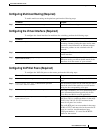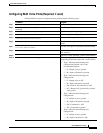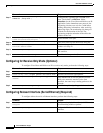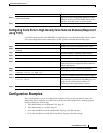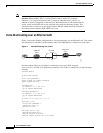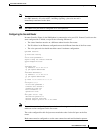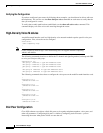
Cisco Hoot and Holler over IP
Configuration Tasks
13
Cisco IOS Release 12.1(5)T
Configuring Multicast Routing (Required)
To enable multicast routing on the platform, perform the following steps:
Configuring the Virtual Interface (Required)
To configure the virtual interface for multicast fast switching, perform the following steps:
Configuring VoIP Dial Peers (Required)
To configure the VoIP dial peers on the router, perform the following steps:
Command Purpose
Step 1
Router(config)# ip multicast-routing
Enables multicast routing.
Command Purpose
Step 1
Router(config)# interface vif1
Defines a virtual interface for multicast fast
switching. Routers joining the same session must
have their virtual interfaces on different subnets.
Otherwise, packets are not switched to the IP
network.
Step 2
Router(config-if)# ip address address subnet-mask
Assigns the IP address and subnet mask for the
virtual interface.
Step 3
Router(config-if)# ip pim { sparse mode | dense-mode |
sparse-dense-mode }
Specifies Protocol Independent Multicast (PIM).
Whatever mode you choose should match all the
interfaces in all the routers of your network.
Command Purpose
Step 1
Router(config)# dial-peer voice tag voip
Assigns a variable number (tag) to the VoIP dial
peer.
Step 2
Router(config-dial-peer)# destination-pattern
multicast-session-number
The destination pattern for the VoIP dial peer must
match the value of the multicast-session-number
string for the corresponding voice port.
Step 3
Router(config-dial-peer)# session protocol multicast
This step is mandatory for voice multicasting and
is the command introduced specifically for the
Cisco Hoot and Holler over IP application.
Step 4
Router(config-dial-peer)# session target
ipv4:address:port
Assigns the session target for voice multicasting
dial peers. This is a multicast address in the range
224.0.1.0 to 239.255.255.255 and must be the
same for all ports in a session.
The audio RTP port is an even number in the range
16384 to 32767, and must also be the same for all
ports in a session. An odd-numbered port
(UDP port number + 1) is used for the RTCP
traffic for that session.



